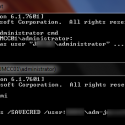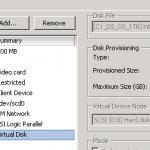The scenario is a small private network connected via a switch and using 192.168.0.* addresses. One of the machines (let’s call it RTR001) on the network has two network interface cards. One with an address on the 192.168.0.* network and another providing wider network (& internet) access on a 123.111.123.* network. This machine (RTR001) will take traffic from the private network 192.168.0.* and route it out via its other interface to the internet etc.
So the router machine (RTR001) has the following interfaces and IP addresses:
- eth0 123.111.0.1
- eth1 192.168.0.1
Configure the kernel to forward IP packets:
/etc/sysctl.conf
# Controls IP packet forwarding net.ipv4.ip_forward = 1
To avoid rebooting implement the same change dynamically:
sysctl -w net.ipv4.ip_forward=1
On CentOS 7, after configuring both network interfaces, we need to use firewalld:
firewall-cmd --zone=external --add-interface=eth0 --permanent firewall-cmd --zone=internal --add-interface=eth1 --permanent
After making changes reload with:
firewall-cmd --complete-reload
Check the settings to ensure your interfaces are listed in the correct zone:
firewall-cmd --list-all-zones
If you have made a mistake you can remove the interface from the zone with:
firewall-cmd --zone=internal --remove-interface=eth0
Configure masquerading on the externally facing device (eth0):
firewall-cmd --zone=external --add-masquerade --permanent
Now the NAT rule (see comments – this may not be required):
firewall-cmd --permanent --direct --passthrough ipv4 -t nat -I POSTROUTING -o eth0 -j MASQUERADE -s 192.168.0.0/24
I was running DNS, DHCP, pxe and several other services from my RTR001 machine to service the internal computers so I opened those ports with:
firewall-cmd --permanent --zone=internal --add-service=dhcp firewall-cmd --permanent --zone=internal --add-service=tftp firewall-cmd --permanent --zone=internal --add-service=dns firewall-cmd --permanent --zone=internal --add-service=http firewall-cmd --permanent --zone=internal --add-service=nfs firewall-cmd --permanent --zone=internal --add-service=ssh
Reload the firewall rules and test pings from the internal machines:
firewall-cmd --complete-reload firewall-cmd --list-all-zones


Thank you for your manual. Worked fine for me until a reboot. After I rebooted the machine all network devices are assigned to the default zone. It doesnt matter if I configure it with the command line or with the firewalld-GUI.
May you have any idea what I could do?
I fixed this by adding
ZONE=internal
or
ZONE=external
to the file /etc/sysconfig/network-scripts/ifcfg-eno1
In RHEL7.3, the commands firewall-cmd –zone=external –add-interface=eth0 –permanent seem to append the zone to the network config file /etc/sysconfig/network-scripts/ifcfg-xyz automatically now.
You don’t need to reboot if you changed /etc/sysctl.conf, just execute the following command to reload it;
sysctl -p
erig from Freenode #firewalld told me that line
firewall-cmd –permanent –direct –passthrough ipv4 -t nat -I POSTROUTING -o eth0 -j MASQUERADE -s 192.168.0.0/24
is not necessary. I made a test and he is right